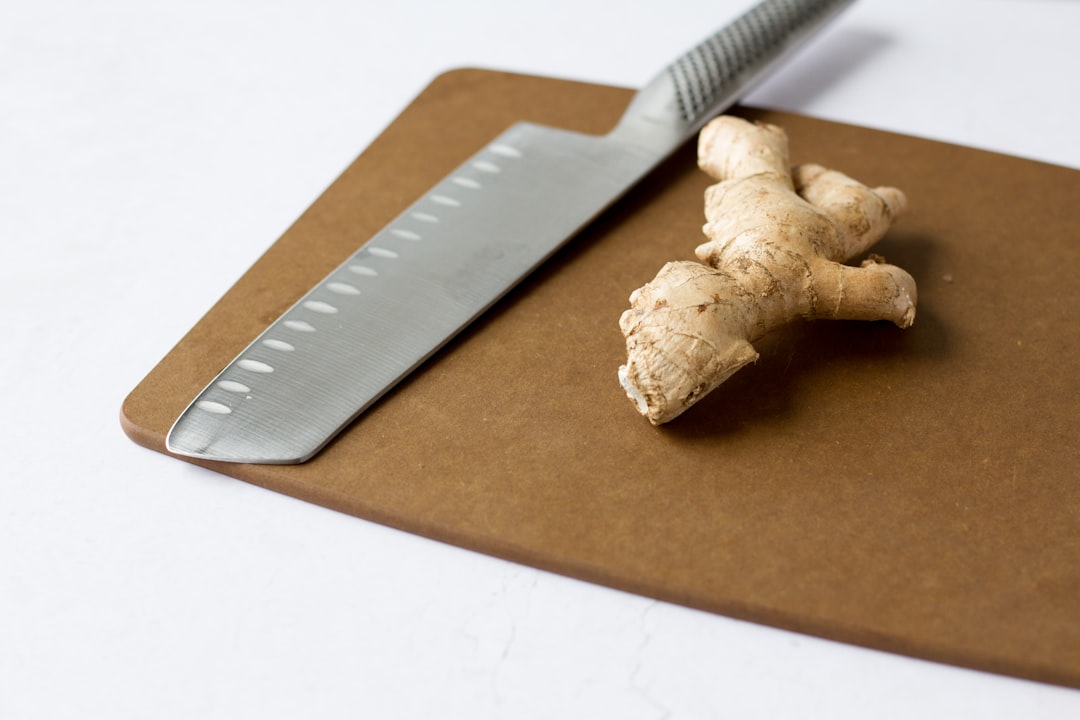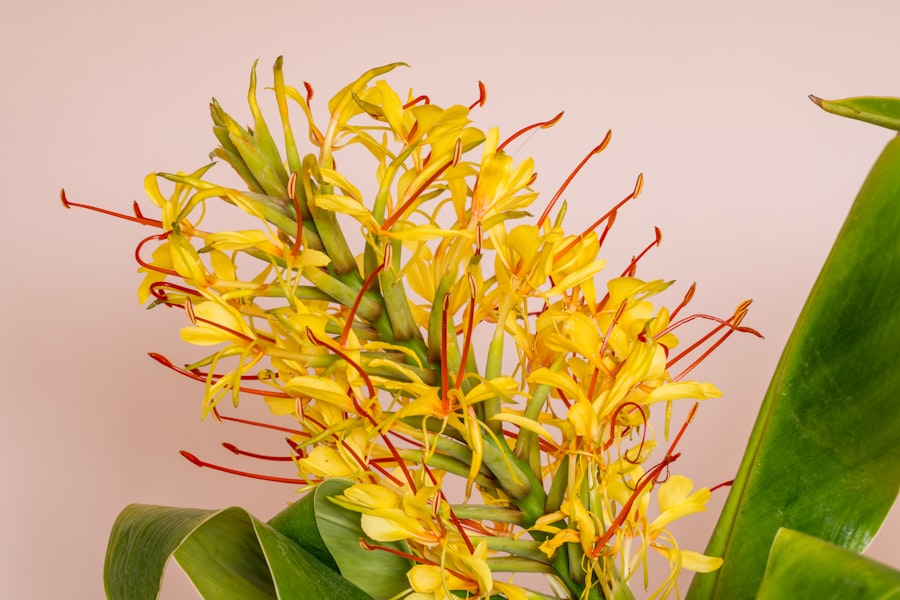Growing Ginger: A Guide to Planting and Caring for Your Own Spice

Ginger is a spice that has been used for centuries in various cuisines and traditional medicine practices. It is native to Southeast Asia and has since spread to other parts of the world. The ginger plant belongs to the Zingiberaceae family and is known for its distinctive flavor and aroma.
In terms of culinary uses, ginger is incredibly versatile. It can be used in both sweet and savory dishes, adding a unique and spicy kick. It is commonly used in Asian cuisine, particularly in dishes such as stir-fries, curries, and soups. Ginger can also be used to make beverages like ginger tea or ginger ale.
Aside from its culinary uses, ginger also offers a range of health benefits. It contains bioactive compounds such as gingerol, which has powerful anti-inflammatory and antioxidant properties. Ginger has been used in traditional medicine to treat various ailments such as nausea, indigestion, and arthritis. It may also help reduce muscle pain and soreness, lower blood sugar levels, and improve digestion.
Choosing the Right Ginger Variety for Your Garden
When it comes to growing ginger in your garden, there are different varieties to choose from. The most common types of ginger include culinary ginger (Zingiber officinale), shell ginger (Alpinia zerumbet), and torch ginger (Etlingera elatior).
Culinary ginger is the most widely used variety for cooking purposes. It has a pungent flavor and is often used in Asian cuisine. Shell ginger, on the other hand, is primarily grown for its ornamental value. It has large, colorful leaves and produces beautiful flowers. Torch ginger is another ornamental variety that is known for its tall flower spikes.
When choosing a ginger variety for your garden, there are several factors to consider. First, consider the climate in your area. Some varieties of ginger are more suited to tropical or subtropical climates, while others can tolerate cooler temperatures. Additionally, consider the space you have available in your garden. Culinary ginger can be grown in containers, making it a suitable choice for small gardens or balconies.
Preparing Your Soil for Ginger Planting
Ginger plants thrive in well-draining soil that is rich in organic matter. Before planting ginger, it is important to prepare the soil properly to ensure optimal growth and yield.
Start by clearing the area of any weeds or debris. Then, loosen the soil using a garden fork or tiller. This will help improve drainage and allow the ginger roots to penetrate the soil easily. If your soil is heavy clay or compacted, consider adding organic matter such as compost or well-rotted manure to improve its structure.
Ginger plants prefer slightly acidic soil with a pH level between 6.0 and 6.5. You can test the pH of your soil using a soil testing kit, which can be purchased at most garden centers. If your soil is too acidic, you can add lime to raise the pH level. Conversely, if your soil is too alkaline, you can add sulfur to lower the pH level.
Planting Ginger: Step-by-Step Guide
| Step | Description | Timeframe |
|---|---|---|
| 1 | Choose a suitable location | Before planting season |
| 2 | Prepare the soil | 1-2 weeks before planting |
| 3 | Obtain ginger seed | Before planting season |
| 4 | Plant the ginger | During planting season |
| 5 | Water regularly | Throughout growing season |
| 6 | Fertilize | Every 4-6 weeks during growing season |
| 7 | Harvest | 8-10 months after planting |
The best time to plant ginger is in the spring, after the last frost has passed. Here is a step-by-step guide on how to plant ginger:
1. Select healthy ginger rhizomes from a reputable source. Look for rhizomes that are firm and plump, with several buds or “eyes.”
2. Soak the ginger rhizomes in water overnight to help stimulate growth.
3. Prepare your planting area by creating furrows or trenches that are about 2-3 inches deep.
4. Place the ginger rhizomes in the furrows, spacing them about 8-10 inches apart. Make sure the buds or eyes are facing up.
5. Cover the ginger rhizomes with soil, gently pressing it down to ensure good contact with the roots.
6. Water the newly planted ginger thoroughly, making sure the soil is evenly moist.
7. Mulch the planting area with a layer of organic mulch, such as straw or wood chips, to help retain moisture and suppress weeds.
Watering and Fertilizing Your Ginger Plants
Ginger plants require regular watering to ensure healthy growth. They prefer moist soil but can be prone to rot if overwatered. It is important to strike a balance and avoid both underwatering and overwatering.
During the growing season, water your ginger plants consistently, keeping the soil evenly moist. Avoid letting the soil dry out completely between waterings, as this can cause stress to the plants. However, be careful not to overwater, as this can lead to root rot.
In terms of fertilization, ginger plants benefit from regular feeding with a balanced organic fertilizer. Apply a slow-release fertilizer at the beginning of the growing season and supplement with liquid fertilizer every 4-6 weeks. This will provide the necessary nutrients for healthy growth and high yields.
Controlling Pests and Diseases in Ginger Plants

Like any plant, ginger is susceptible to pests and diseases. Some common pests that can affect ginger plants include aphids, spider mites, and root-knot nematodes. These pests can cause damage to the leaves, stems, and roots of the plants.
To control pests in your ginger garden, it is important to practice good garden hygiene. Remove any weeds or debris that may harbor pests and regularly inspect your plants for signs of infestation. If you notice any pests, you can try using natural control methods such as insecticidal soap or neem oil.
In terms of diseases, ginger plants can be affected by fungal infections such as root rot and leaf spot. To prevent these diseases, it is important to provide good air circulation around the plants and avoid overwatering. If you notice any signs of disease, such as yellowing leaves or wilting, remove the affected plants and dispose of them properly to prevent the spread of infection.
Harvesting Ginger: When and How to Harvest Your Spice
Ginger is typically harvested when the plant reaches maturity, which is usually around 8-10 months after planting. There are several signs that indicate ginger is ready for harvest.
First, the leaves of the ginger plant will start to turn yellow and die back. This is a natural process that indicates the plant is diverting its energy to the rhizomes underground. Additionally, you can gently dig around the base of the plant to check the size of the rhizomes. Mature ginger rhizomes are usually about 3-4 inches long and have a firm texture.
To harvest ginger, carefully dig up the entire plant using a garden fork or shovel. Be careful not to damage the rhizomes during the process. Shake off any excess soil and trim off the leaves and stems, leaving about an inch of stem attached to each rhizome.
Storing and Using Fresh Ginger
Fresh ginger can be stored for several weeks if properly stored. To store fresh ginger, wrap it in a paper towel and place it in a plastic bag or airtight container. Store it in the refrigerator, where it will stay fresh for up to three weeks.
When it comes to using fresh ginger in your cooking, there are countless possibilities. It can be grated or minced and added to stir-fries, curries, soups, and marinades. It can also be used to make ginger tea or infused into beverages like lemonade or cocktails. Fresh ginger adds a zesty and aromatic flavor to dishes and can elevate the taste of any recipe.
Propagating Ginger: How to Grow More Plants from Your Harvest
If you want to grow more ginger plants from your harvest, there are several methods you can use for propagation. The most common method is to divide the ginger rhizomes and replant them.
To propagate ginger through division, start by selecting healthy rhizomes from your harvest. Cut the rhizomes into smaller pieces, making sure each piece has at least one bud or eye. Allow the cut surfaces to dry for a few hours to prevent rotting.
Next, prepare a new planting area by following the same soil preparation techniques mentioned earlier. Plant the ginger rhizome pieces in the soil, making sure the buds or eyes are facing up. Water the newly planted rhizomes and provide them with the same care as you would for mature ginger plants.
Enjoying the Fruits of Your Ginger Garden
In conclusion, growing ginger in your garden can be a rewarding experience. Not only does it provide you with a versatile and healthy spice, but it also adds beauty to your garden with its lush foliage and vibrant flowers.
By choosing the right ginger variety, preparing your soil properly, and providing the necessary care, you can successfully grow ginger in your garden. Whether you use it in your cooking or enjoy its medicinal properties, ginger is a valuable addition to any garden.
So why not start a ginger garden today and enjoy the benefits of this versatile and healthy spice? With a little time and effort, you can have a bountiful harvest of fresh ginger right at your fingertips.



